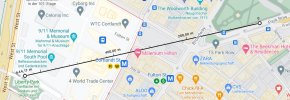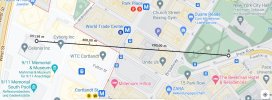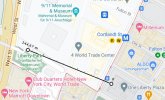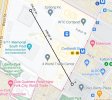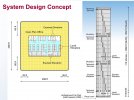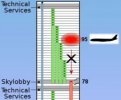Marc Powell
Active Member
It is claimed by 9/11 conspiracy theorists that the damage and injuries that are documented to have occurred in the base of the World Trade Center North Tower were from a mistimed explosion that went off a few seconds before the impact of Flight 11. As documentation of the mysterious explosion, they present witness statements as well as an audio recording made by an office worker named Ginny Carr at a business meeting in a building near the World Trade Center that morning.
Attached is an audio clip from the recording as presented at the 46:20 mark in the 2014 David Hooper film The Anatomy of a Great Deception (viewable in its entirety at youtube.com/watch?v=l0Q5eZhCPuc ). As can be heard, the audio clip starts with a muffled bang and then about nine seconds later there is another, much louder, bang after which someone at the meeting exclaims, "It sounded like something crashed!" The narrator tells the audience the first bang is the basement explosion and the second is the crash of Flight 11, but that is simply not true. The recording was edited and altered to deceive the audience.
Please compare that version of the Ginny Carr recording with the attached clip taken from the original version available at The September 11 Digital Archive website (00:33 mark at 911digitalarchive.org/items/show/96100 ). In the original recording, the unmistakable whine of jet engines from the approaching plane can be heard for a few seconds before the first bang, and the first bang is much louder than the second. The filmmakers concealed the jet engine sound by narrating over it and they adjusted the sound levels of the two crashing sounds so that the thunderous airplane impact, which is the first bang, seems like only a muted explosion.
Since it takes about nine seconds for an object to free fall from 1,100 feet, the second bang was very likely from debris crashing to the bottom of elevator shafts. So then, the absence of an explosion sound before the plane crash disproves witness reports of an early explosion as being the source of the mayhem in the lobby and basement levels, while the timing of the second bang provides a reasonable explanation for what witnesses may have actually experienced and when they experienced it.
Attached is an audio clip from the recording as presented at the 46:20 mark in the 2014 David Hooper film The Anatomy of a Great Deception (viewable in its entirety at youtube.com/watch?v=l0Q5eZhCPuc ). As can be heard, the audio clip starts with a muffled bang and then about nine seconds later there is another, much louder, bang after which someone at the meeting exclaims, "It sounded like something crashed!" The narrator tells the audience the first bang is the basement explosion and the second is the crash of Flight 11, but that is simply not true. The recording was edited and altered to deceive the audience.
Please compare that version of the Ginny Carr recording with the attached clip taken from the original version available at The September 11 Digital Archive website (00:33 mark at 911digitalarchive.org/items/show/96100 ). In the original recording, the unmistakable whine of jet engines from the approaching plane can be heard for a few seconds before the first bang, and the first bang is much louder than the second. The filmmakers concealed the jet engine sound by narrating over it and they adjusted the sound levels of the two crashing sounds so that the thunderous airplane impact, which is the first bang, seems like only a muted explosion.
Since it takes about nine seconds for an object to free fall from 1,100 feet, the second bang was very likely from debris crashing to the bottom of elevator shafts. So then, the absence of an explosion sound before the plane crash disproves witness reports of an early explosion as being the source of the mayhem in the lobby and basement levels, while the timing of the second bang provides a reasonable explanation for what witnesses may have actually experienced and when they experienced it.
Attachments
Last edited by a moderator:

